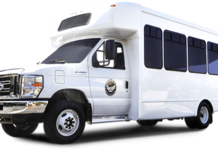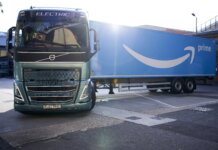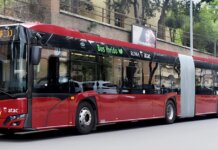Whether you are capturing biogas, moving compressed natural gas through a grid, or equipping a fuel station for natural gas vehicles, these six considerations will point you to the system, controls and service that are right for you.
Efficiency
No leaks. Methane is an aggressive greenhouse gas, so you don’t want it leaking from your compressor into the atmosphere. In addition to environmental concerns, less gas goes into your processing plant, your pipeline or your mobility stations.
Gas leakage losses can be a huge expense, and a compressor should not be the source. A purpose-designed gas compressor with a pressurized crank case all but eliminates leakage by redirecting excess methane back into the compression process.
Variable-speed drive. A gas compressor with variable-speed drive (VSD) adjusts flow to match the constantly changing production of methane gas. It automatically speeds up or slows down with those variations, so the compressor consumes only the energy needed for a specific flow. VSD compressors simplify process design, too.
Reuse heat. It’s simple physics: compressing any gas gives off heat. But this heat can be recovered and repurposed.
For example, the heat of compression can heat your building, preheat water returning to a boiler, or apply heat to a production process. Both air-cooled and water-cooled compressors have applications for heat recovery, with the potential to recoup more than 90% of the compressor’s electrical input energy.
System design
Right size. A gas compressor should be properly sized to meet the specific requirements of a project. Since gas operations either run 24/7 or must be available 24/7, a fundamental question will be what is the maximum flow required? A system that includes at least one VSD gas compressor can ensure that flow matches demand.
Right number. Rather than specifying one large gas compressor to provide the needed flow, consider specifying two or more smaller compressors. This enables you to run your process at whatever level is needed, allows service to be performed without shutting down your process, and provides built-in redundancy.
Already thinking about growth? Then keep in mind that if you have one large compressor, it can be more difficult to grow when your planned expansion of flow equals less than the output of your original compressor.
Be direct. When the drive motor is connected directly to the compression element – a direct-drive configuration – there are no drive belts to adjust, break or replace. Transmission losses are eliminated, which saves about 6% on energy consumption. Direct-drive compressors are quieter than belt-driven units, too.
Keep your cool. Air-cooled units are available as modular, pre-packaged solutions for ease of installation with a smaller footprint. Water-cooled systems tend to be more involved – but for the right application, they are a big energy saver.
Both air-cooled and water-cooled compressors have their applications, so work with a supplier that can help you make the smart choice for your process.
Controls
Remote monitoring. You can have real-time access to all readings on your compressor, anytime and anywhere, with remote monitoring. Advanced warnings of service requirements are sent to you through SMS and email. Many CNG and RNG plants are remotely located, and some run without any people present, which makes remote monitoring a key capability.
Centralized controls. Your gas compressors should communicate with you, and also with each other. Centralized controls automatically determine which compressor leads and which follows. Running hours are managed to ensure equal usage and reduce maintenance costs. Each gas compressor should have its own native controller. Look for a user interface that is straightforward and intuitive to use, with a modern touch screen.
Power and pressure
Electric- or gas-driven. Where electricity provides a lower cost of power, it’s the preferred choice to power a gas compressor. Of course, it’s also good to have options. A gas-driven compressor can be ideal in remote locations where the cost of electricity is prohibitive or access is unavailable. The same gas that is part of your process can power your compressor.
Pressure options. Depending on process design and requirements, gas compressor inlet pressures can be achieved with 1, 2, 3 or 4 stage configurations. By utilizing the pressure you have available, you can make your system as efficient as possible. Since outlet pressures can range from 14 psi(g) up to 4,500 psi(g), it’s important to size a compressor correctly and in the proper configuration.
Build your system
Be adaptable. Make it a goal to build a modular gas compression system that enables you to change or expand an installation more easily. The flexibility of a modular installation lets you accommodate changes in your process as technology, markets, regulations or business goals change.
Be green. Does your process produce CO2 now, or will it in the future? If so, you can design a system to recover that CO2. With the right design, it’s possible to make your entire system carbon-neutral or perhaps even carbon-negative.
The right supplier
From digester to dispenser, can you find a complete solution supplier for gas compression systems? As you evaluate suppliers for your gas compressor system, consider these questions:
- Are they a local partner with experience in the field?
- Have they worked with your current contractors?
- Are they a packager that pieces together the products of other companies, or do they manufacture systems engineered for the specific needs of CNG and RNG applications?
- Do they have full-service capabilities?
- From where are the spare parts sourced, and where are they stocked?
- How many technicians do they have, and where are they located?
- What is your supplier’s approach to safety?
- What has the supplier done to help others in your field or a complementary field?
- What is the supplier’s environmental record and commitment to green practices?
David Walters is Atlas Copco’s national sales manager for CNG solutions, with more than 25 years’ experience working with customers across a broad range of sectors. He is based in New Jersey and works with customers across the U.S.







